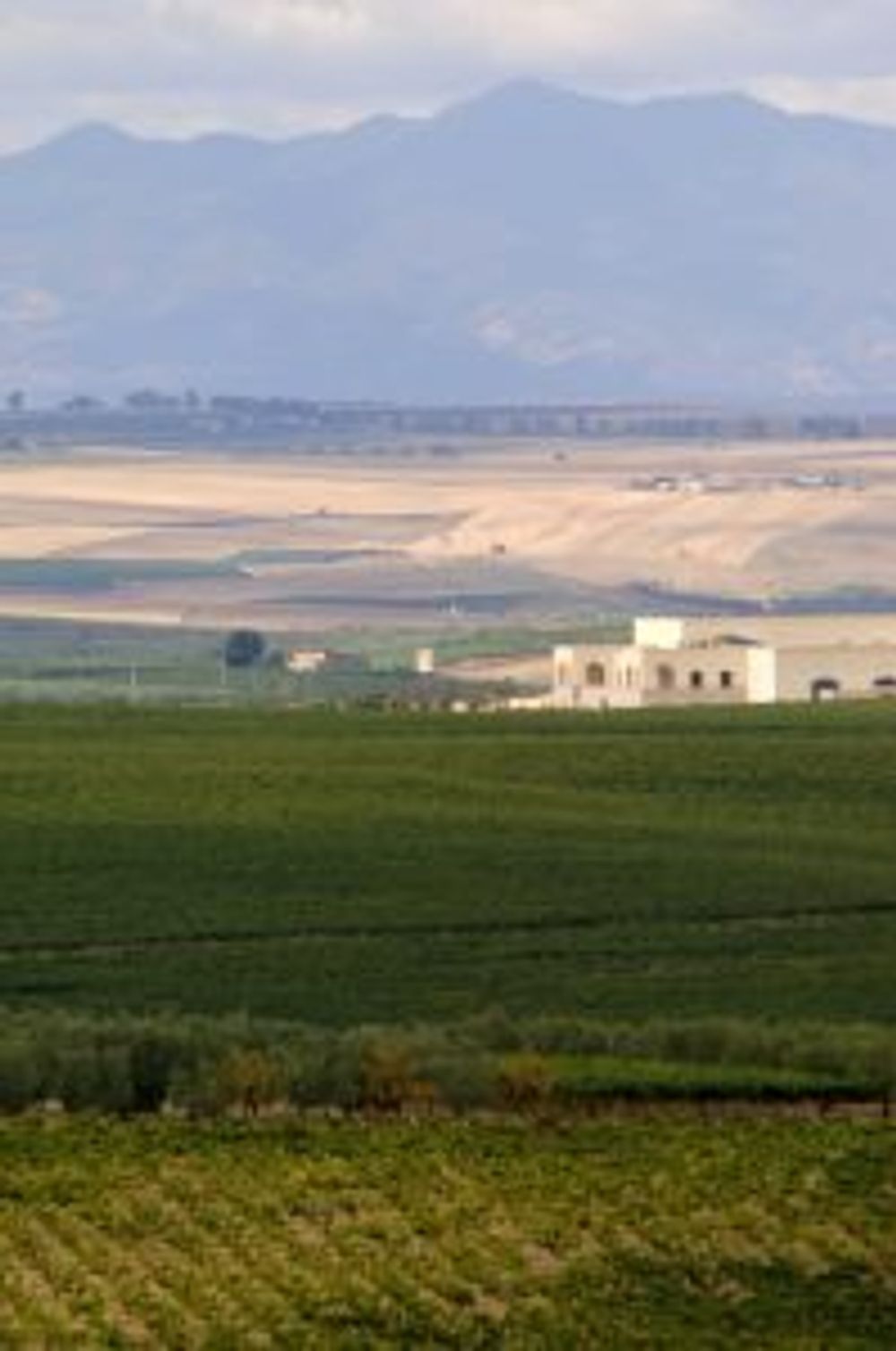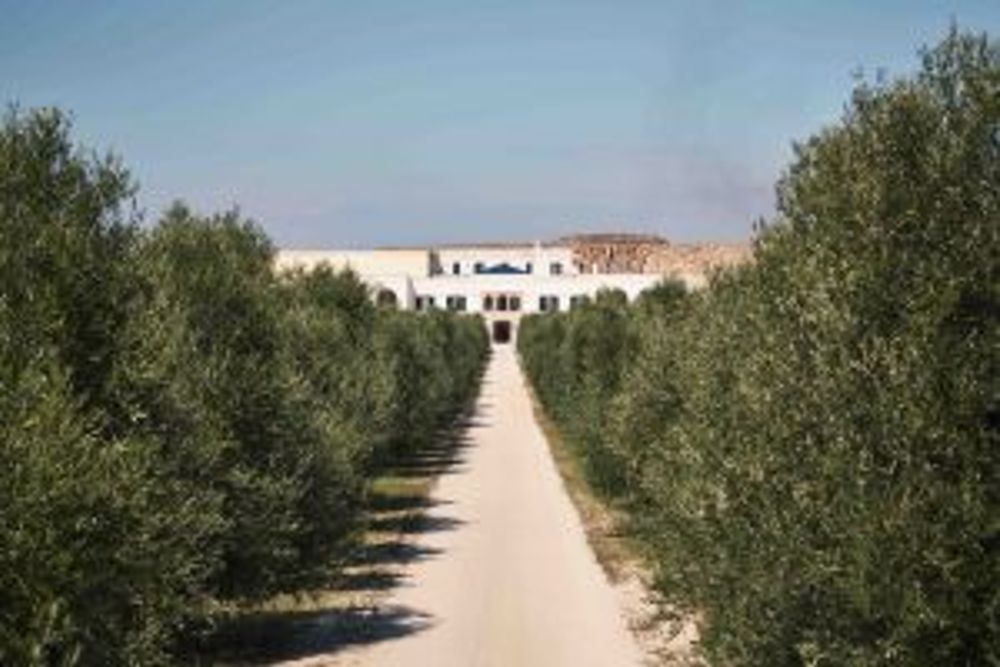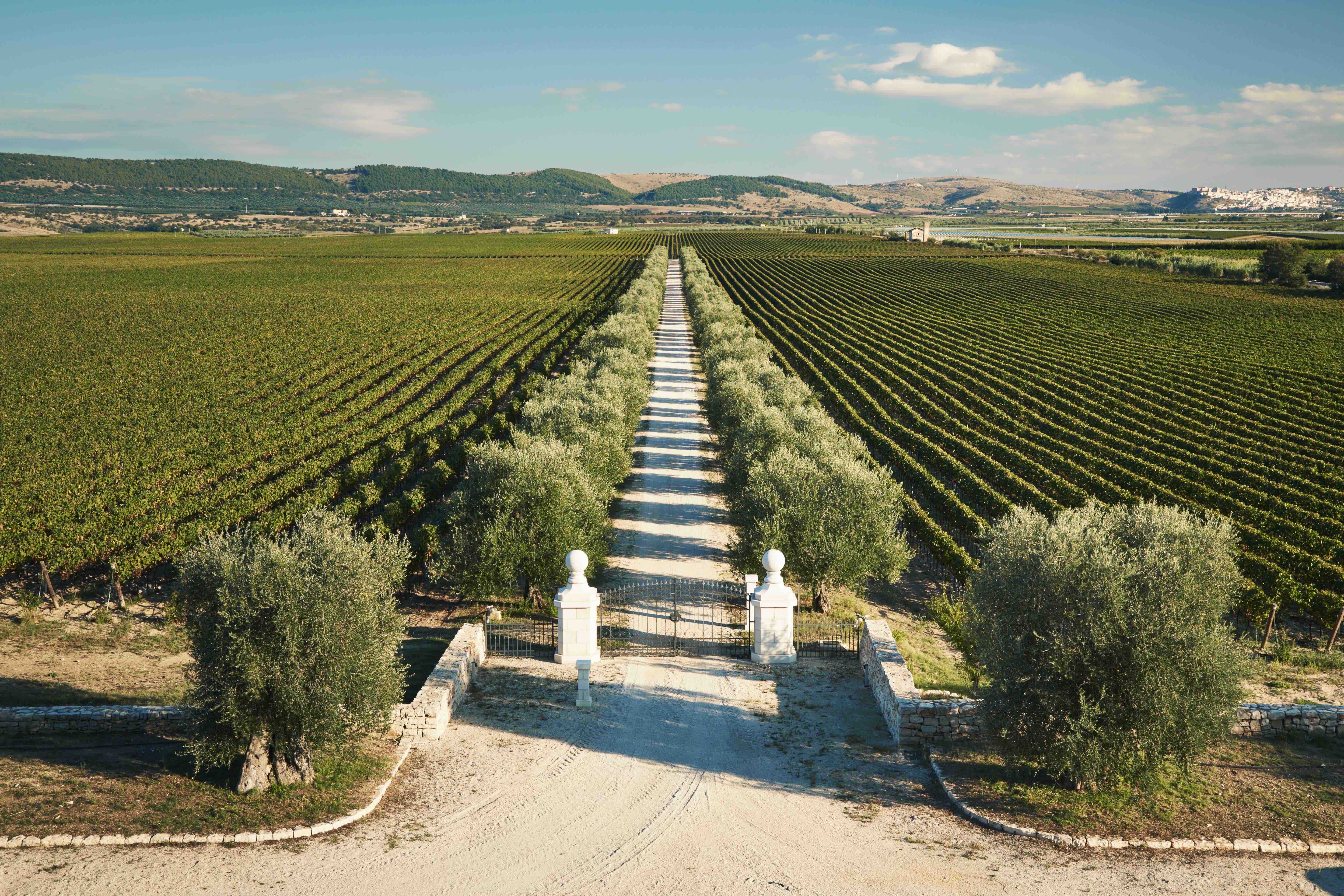Aglianico is a misunderstood grape and Puglia is an Italian region that is the subject of prejudice. So how did Antinori overcome these obstacles?
Aglianico represents the south in Italy’s holy trinity of noble red varieties. Parallels to its counterparts from northern and central Italy are readily drawn: to the tannins of Nebbiolo and the acidity of Sangiovese.
The famous appellations of Aglianico though, are in Basilicata and Campania with Aglianico del Vulture and Taurasi, respectively. Bocca di Lupo, on the other hand, hails from Puglia which, so Palumbo says “has been a victim of prejudice, especially in the wine trade,” and known as “the cellar of Europe” with its huge production of bulk wine, especially ripe, soft and rich Primitivo.

Bocca di Lupo – Landscape with Vulture
In fact, Tormareca’s own beginnings were as a producer of bulk wine before being bought by Marcheso Antinori in 1998 who have since invested more than €35million. Palumbo explains that before vineyards were devastated by phylloxera, Aglianico was more common across the southern part of Italy. Since the re-planting on American rootstocks, Primitivo has been in the ascendancy.
The challenge of working with Aglianico’s tannins
Grown at an altitude of 300-350m in the calcareous tufa soils of Puglia’s wild, perpetually windy Castel del Monte region, on the eastern side of the Appenines, Italy’s long, mountainous spine, the Aglianico that makes Bocca di Lupo thrives within sight of the Vulture volcano.
The challenge of the Bocca di Lupo project was to create an identity for Puglian Aglianico which is neither well known nor well understood.
“Aglianico has very aggressive tannins,” explains Palumbo, “these can lead to a misinterpretation of the grape. People sometimes think it is rustic. This was the biggest challenge we faced, working on these tannins so they become like a fist in a velvet glove.”
Palumbo explains that like its northern counterpart Barolo (made from Nebbiolo), Aglianico used to become approachable only at 25 years of age. “But we want wines that are ready to drink but also have the ability to age,” states Palumbo, “we want to show you what we did.” Palumbo had picked four key vintages, representing the different steps in this “search for a Puglian identity.”

So how were the wines showing?
2004 Bocca di Lupo was still an expression of power, with tannins extracted via pump-overs and aged in 70% new wood. The wine today still shows ample but very savoury, smoky fruit and still mouth-filling tannins. It is a very recognisable if rustic Aglianico style.
2006 Bocca di Lupo, says Palumbo “starts playing with elegance”. The wine displays lovely acidity and is not quite such a big beast. 2006 marks the beginning of fundamental changes.
Palumbo explains the importance of leaf-plucking, allowing for full exposure to the sun and ripe grape skins. Conversion to organics led to a far more intimate way of farming which allows for a far better selection of the best fruit from over 40ha of vineyards. In the cellar, conic fermentation tanks were introduced, fermentation temperatures are lower and tannin extraction now is via mechanical punch-down.
For maturation the proportion of Hungarian to French oak has increased and 500-600l barrels are used rather than 225-l barriques. New oak is used far less prevalent.
2010 Bocca di Lupo is the first vintage from newly-planted vines which by then were 8-10 years old. The wine has distinct floral aromas with hints of peony and bayleaf and none of the rusticity of 2004. The expression is much softer on the mid-palate while the fine tannic grip is not felt until the finish, which comes with aromatic length.
“2010 still is a very vertical wine but it begins to show the identity of Puglian Aglianico,” Palumbo explained.
2011 Bocca di Lupo (not yet released) shows a very aromatic nose with notes of fennel seed, liquorice and an almost tropical aspect of dark fruit and a very juicy, exuberant palate. This is a distinctly modern wine with a plush but still powerful softness.
Towards achieving a new identity in Puglia

Bocca di Lupo Estate
In his own words, Palumbo defines the identity of Puglia Aglianico.
“There are many more shades and nuances in Puglian Aglianico, the nose is more open. The tannins are vertical but you have many more facets. There is a distinct influence of the seaside, giving the wine a more open and warm appeal,” he states.
Returning to his earlier point, Palumbo says: “One of the reasons why Puglia still suffers the prejudice [of bulk wine] is because of a choice of producers to make very ripe wines. Puglian Aglianico, compared to other appellations, is less austere but shows acidity and that is very important – in fact one of the most important things in Puglia.”
All photography copyright Tormaresca































